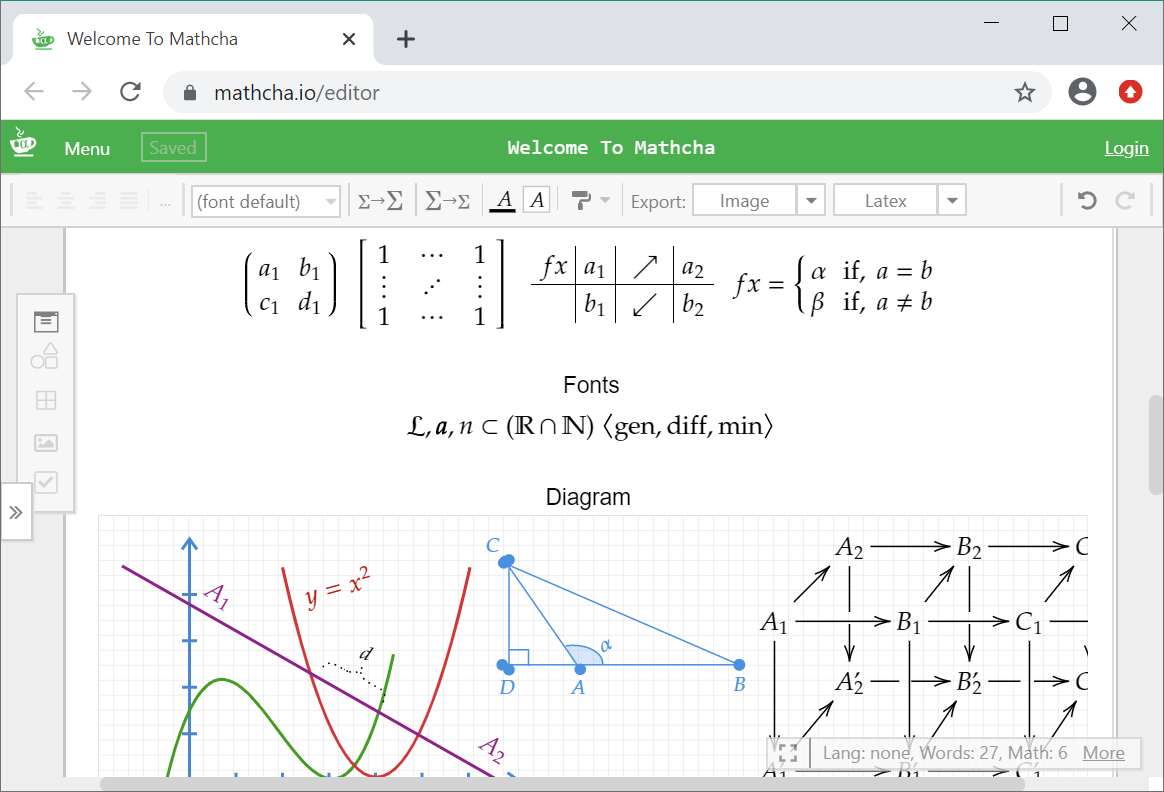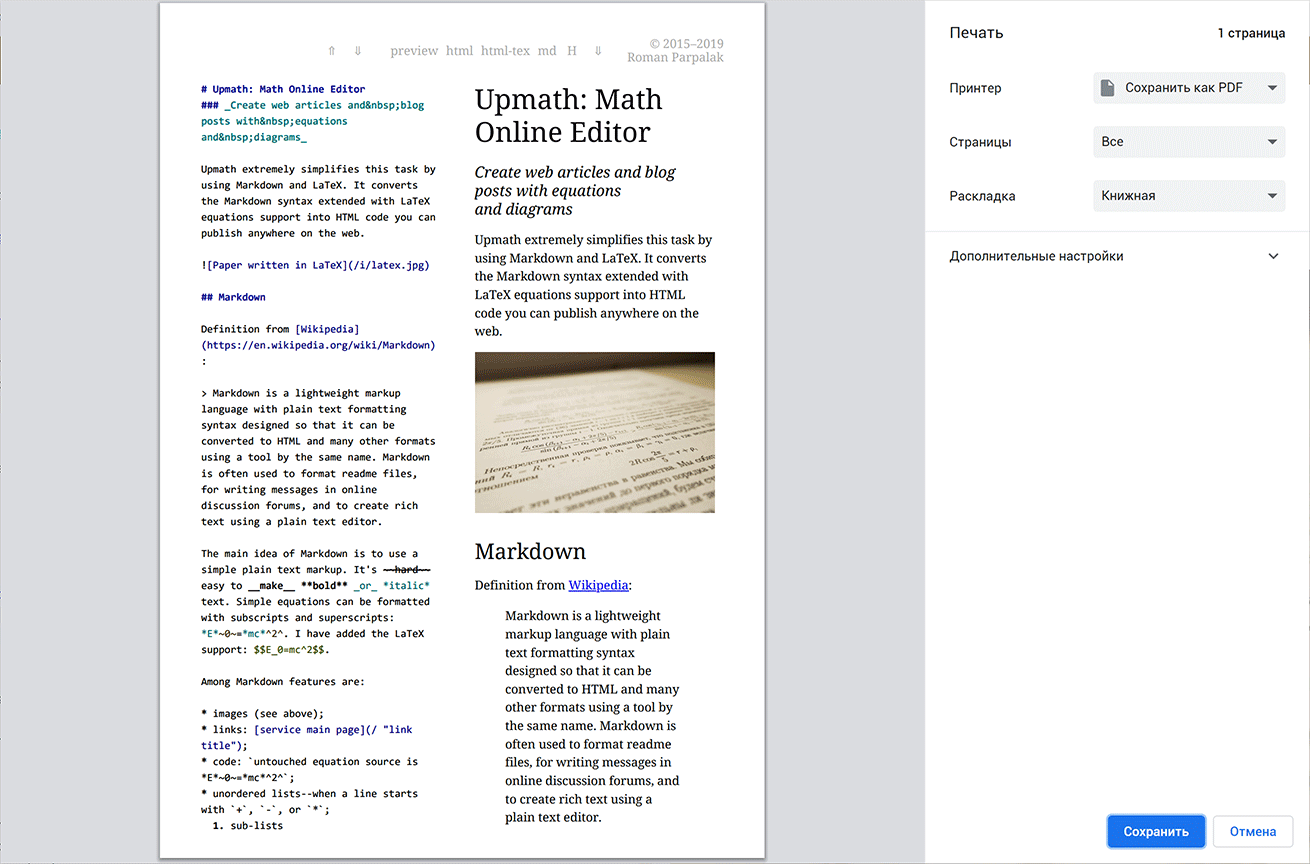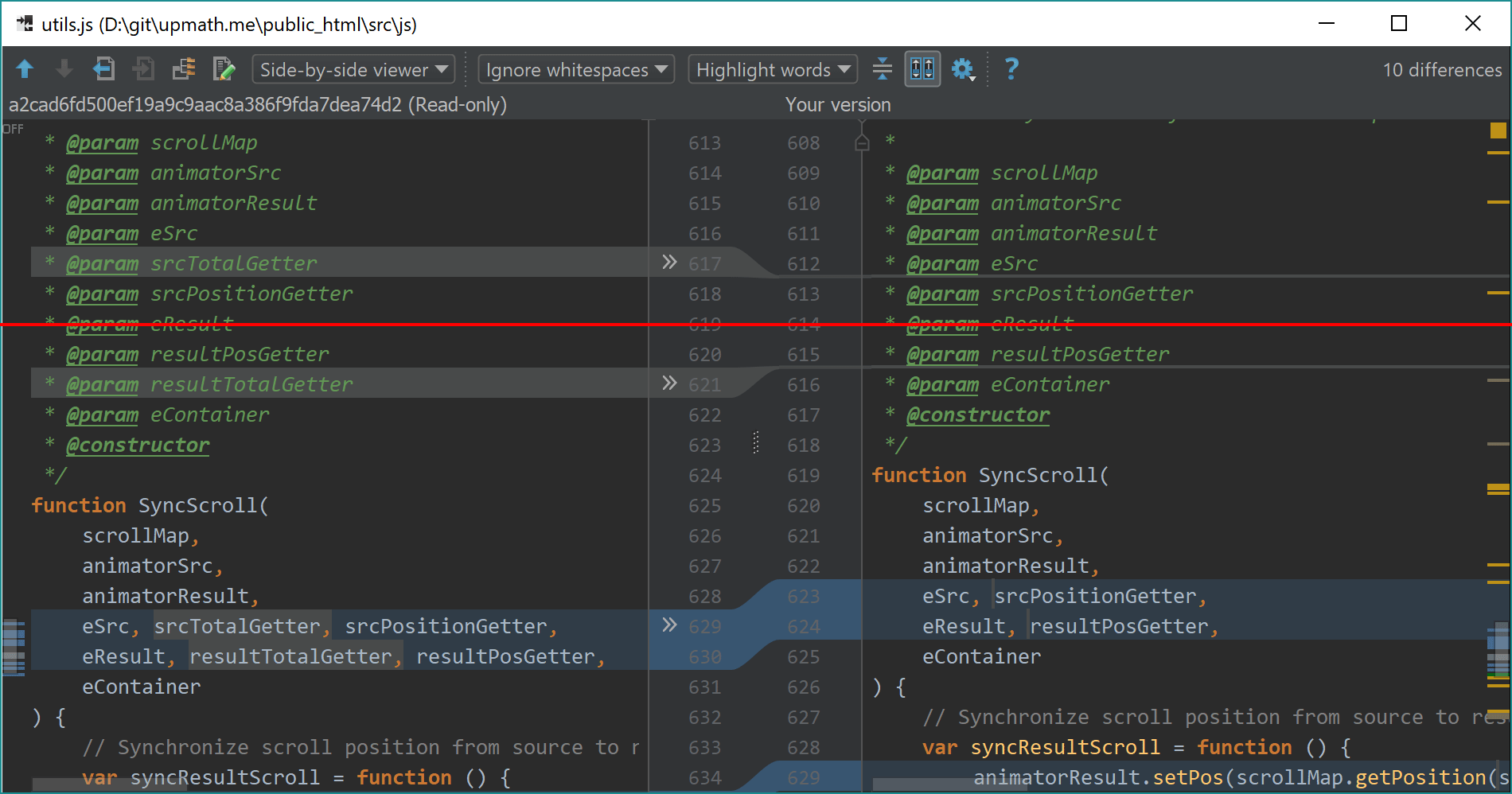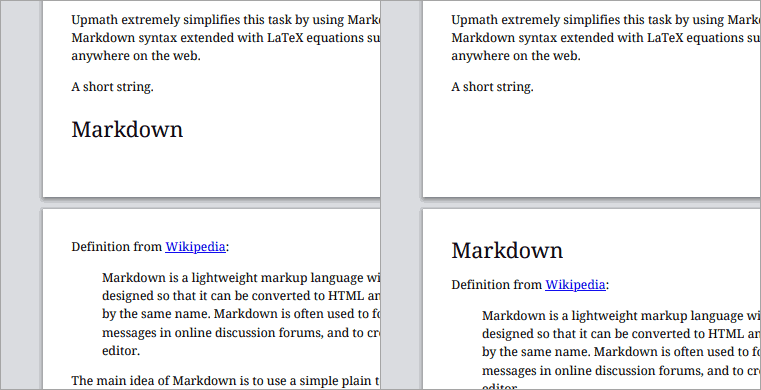Редактор математических текстов Mathcha
Искал

Этот редактор — визуальный: вы сразу редактируете документ вместе с форматированием. В отличие от моего редактора Upmath, в котором вы редактируете исходник на маркдауне и латехе, хотя и сразу видите результат.
Вот рисунок, который я сделал с помощью Mathcha. Накидал основу в нем, экспортировал в TikZ и подправил исходный код уже в UpMath.
$$ \tikzset{every picture/.style={line width=0.75pt}} %set default line width to 0.75pt \begin{tikzpicture}[x=0.75pt,y=0.75pt,yscale=-1,xscale=1] %uncomment if require: \path (0,300); %set diagram left start at 0, and has height of 300 %Shape: Boxed Line [id:dp7642567693966007] \draw (130,80) -- (130,140) ; %Shape: Boxed Line [id:dp02318954146147889] \draw (130,150) -- (130,180) ; %Shape: Boxed Line [id:dp4638027067588357] \draw (130,190) -- (130,250) ; %Shape: Wave [id:dp03622557580885122] \draw [color={rgb, 255:red, 74; green, 144; blue, 226 } ,draw opacity=1 ] (215,80) .. controls (202.19,83.1) and (190,86.06) .. (190,89.5) .. controls (190,92.94) and (202.19,95.9) .. (215,99) .. controls (227.81,102.1) and (240,105.06) .. (240,108.5) .. controls (240,111.94) and (227.81,114.9) .. (215,118) .. controls (202.19,121.1) and (190,124.06) .. (190,127.5) .. controls (190,130.94) and (202.19,133.9) .. (215,137) .. controls (227.81,140.1) and (240,143.06) .. (240,146.5) .. controls (240,149.94) and (227.81,152.9) .. (215,156) .. controls (202.19,159.1) and (190,162.06) .. (190,165.5) .. controls (190,168.94) and (202.19,171.9) .. (215,175) .. controls (227.81,178.1) and (240,181.06) .. (240,184.5) .. controls (240,187.94) and (227.81,190.9) .. (215,194) .. controls (202.19,197.1) and (190,200.06) .. (190,203.5) .. controls (190,206.94) and (202.19,209.9) .. (215,213) .. controls (227.81,216.1) and (240,219.06) .. (240,222.5) .. controls (240,225.94) and (227.81,228.9) .. (215,232) .. controls (202.19,235.1) and (190,238.06) .. (190,241.5) .. controls (190,244.57) and (199.7,247.26) .. (210.89,250) ; %Straight Lines [id:da008457960885399407] \draw (190,80) -- (190,250) ; %Flowchart: Summing Junction [id:dp09695643217509597] \draw (135,132.75) .. controls (135,128.75) and (138.36,125.5) .. (142.5,125.5) .. controls (146.64,125.5) and (150,128.75) .. (150,132.75) .. controls (150,136.75) and (146.64,140) .. (142.5,140) .. controls (138.36,140) and (135,136.75) .. (135,132.75) -- cycle ; \draw (137.2,127.62) -- (147.8,137.88) ; \draw (147.8,127.62) -- (137.2,137.88) ; %Shape: Inductor [id:dp3454355331692156] \draw (35,155) -- (42.06,155) .. controls (43.68,155) and (45,156.12) .. (45,157.5) .. controls (45,158.88) and (43.68,160) .. (42.06,160) .. controls (43.68,160) and (45,161.12) .. (45,162.5) .. controls (45,163.88) and (43.68,165) .. (42.06,165) .. controls (43.68,165) and (45,166.12) .. (45,167.5) .. controls (45,168.88) and (43.68,170) .. (42.06,170) .. controls (43.68,170) and (45,171.12) .. (45,172.5) .. controls (45,173.88) and (43.68,175) .. (42.06,175) -- (35,175) ; %Straight Lines [id:da4690178114375858] \draw [dash pattern={on 0.84pt off 2.51pt}] (45,165.5) -- (130,185) -- (190,165) ; %Straight Lines [id:da10916309009890135] \draw [dash pattern={on 0.84pt off 2.51pt}] (45,164.5) -- (130,145) -- (190,165) ; % Text Node \draw (112,127) node [anchor=north west][inner sep=0.75pt] [align=left] {A}; % Text Node \draw (112,191) node [anchor=north west][inner sep=0.75pt] [align=left] {B}; \end{tikzpicture} $$




Оставьте свой комментарий